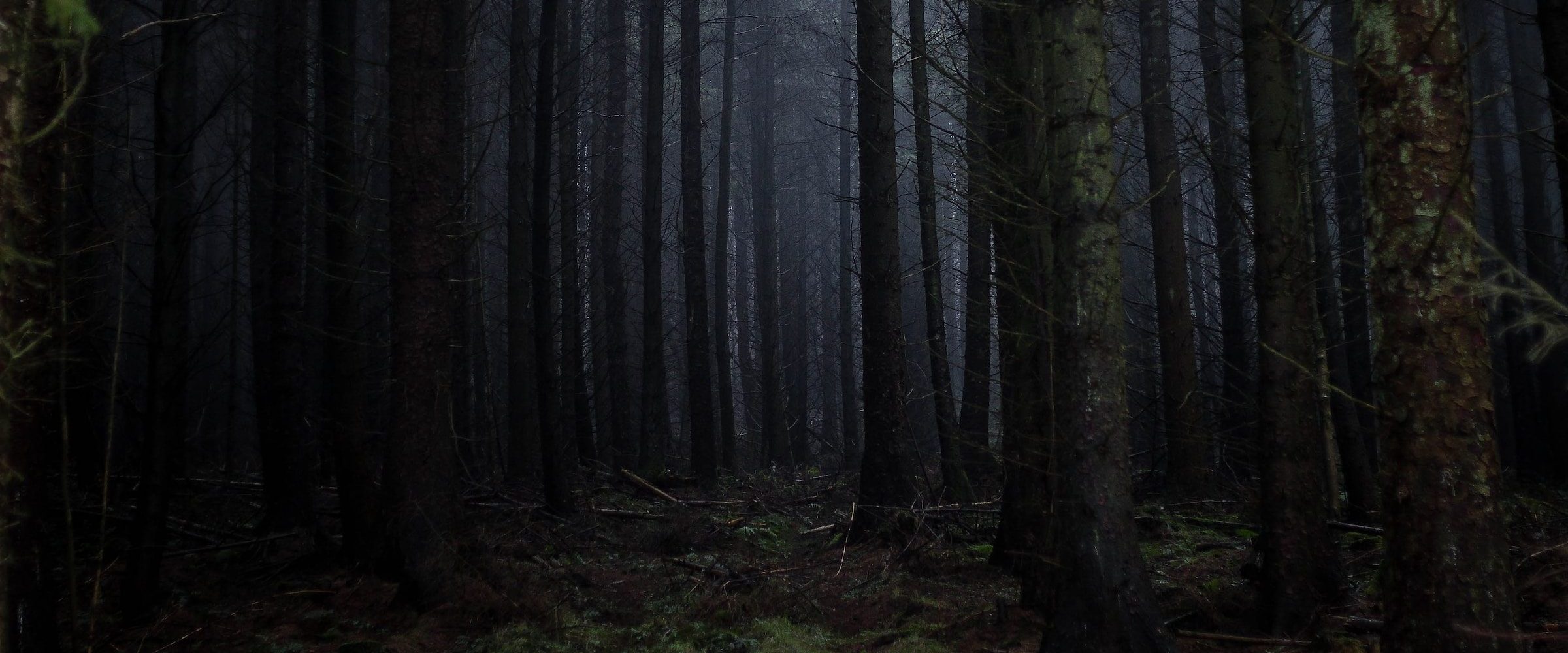Deep in the remote wilderness of North America, an enduring legend persists—the legend of Bigfoot, a towering, ape-like creature, often described as the missing link between humans and primates. For centuries, Native American tribes and settlers have shared tales of mysterious, large, hairy beings lurking in the woods. Despite the proliferation of myths and stories, evidence of Bigfoot remains elusive, and the scientific community remains divided on the existence of this cryptid. In this extensive exploration, we will delve into the history, cultural impact, scientific investigations, and enduring fascination surrounding the creature known as Bigfoot.
Historical Origins:
The legend of Bigfoot, also known by regional names like Sasquatch in the Pacific Northwest, dates back to the earliest encounters between Native American tribes and European settlers. These indigenous cultures often included references to large, hair-covered beings in their oral traditions and artwork. The stories of Bigfoot, passed down through generations, depicted a creature that inhabited the deep forests, mountains, and remote regions of the continent.
One of the earliest written accounts of Bigfoot came from a journal entry by a British explorer named David Thompson, who documented tales from indigenous people in what is now British Columbia, Canada. In 1811, Thompson recorded stories of large, human-like creatures in the region, some of which stood over 10 feet tall.
Regional Variations:
As settlers moved westward, stories of similar creatures were reported across North America. The creature is known by various names depending on the region:
- Sasquatch: This term is commonly used in the Pacific Northwest, particularly in British Columbia and Washington State.
- Skunk Ape: In the swamps and forests of Florida and the Southeastern United States, the creature is often referred to as the Skunk Ape due to the foul odor that some claim accompanies its presence.
- Yeti: In the Himalayan regions, a similar creature is known as the Yeti or Abominable Snowman.
- Yowie: In Australia, a similar legend is known as the Yowie.
- Almas: In Central Asia, particularly in Mongolia and Kazakhstan, the Almas is described as a wild, hairy humanoid.
These regional variations share common characteristics of a large, bipedal, hairy creature, but they are subject to different legends and cultural interpretations.
Physical Description:
Descriptions of Bigfoot vary, but they typically include the following features:
- Height: Reports suggest that Bigfoot stands between 7 to 10 feet tall, making it much taller than the average human.
- Build: It is often described as having a robust, muscular build, which is reminiscent of an ape or a large hominid.
- Hair: Bigfoot is said to be covered in long, dark, and shaggy hair, which provides it with a sense of camouflage in heavily forested areas.
- Face: Witnesses often report a face that is somewhat human-like, with a pronounced brow ridge, but with a flatter nose and no visible mouth or facial hair.
- Footprints: Many alleged Bigfoot sightings are accompanied by the discovery of large, human-like footprints, which have become an iconic symbol of the creature.
Sightings and Encounters:
Bigfoot sightings and encounters have been reported across North America for centuries. However, it was in the late 1950s and early 1960s that the creature gained widespread attention. One of the most famous cases occurred in 1967 when Roger Patterson and Robert Gimlin captured a few seconds of shaky, 16mm film footage of what they claimed was a female Bigfoot near Bluff Creek, California. The film, known as the Patterson-Gimlin film, remains one of the most iconic pieces of evidence in the Bigfoot lore. Skeptics argue that the footage could have been a hoax, but no one has definitively proven its authenticity.
Since then, countless sightings and encounters have been reported across North America, from the densely forested regions of the Pacific Northwest to the vast wilderness of Canada, the swamps of the Southeastern United States, and the remote areas of Alaska. Witnesses have ranged from everyday people to law enforcement officers and park rangers, all of whom have described similar physical characteristics and behaviors of the creature.
Cultural Impact:
Bigfoot’s cultural impact is profound, extending well beyond tales of cryptids in the wilderness. The creature has become an enduring symbol of the unknown and the mysteries of nature. Its influence can be observed in various forms of media, including literature, film, television, and popular culture:
- Literature: Bigfoot has appeared in numerous books and novels, both as the central focus of the story and as a mysterious background element.
- Film and Television: Bigfoot has been featured in various films and television series, from documentaries to fictional movies. Notable examples include “Harry and the Hendersons” and documentaries like “Searching for Bigfoot.”
- Cryptozoology: Bigfoot is often associated with the field of cryptozoology, which involves the study of hidden or undiscovered animals. Researchers and enthusiasts continue to investigate the existence of Bigfoot, contributing to its enduring mystique.
- Tourism: Communities in areas known for Bigfoot sightings have capitalized on the legend by promoting tourism, including guided Bigfoot tours and merchandise.
- Cryptozoological Museums: Several museums around the world are dedicated to the study of cryptids, including Bigfoot. These museums often feature exhibits, eyewitness accounts, and alleged physical evidence of the creature.
- Internet Culture: Bigfoot has a strong online presence, with websites, forums, and social media groups dedicated to discussing sightings, theories, and evidence related to the creature.
The Scientific Perspective:
From a scientific standpoint, the existence of Bigfoot remains highly contentious. The majority of the scientific community maintains a skeptical view of the creature, primarily due to the lack of concrete physical evidence, such as a specimen or remains, that can be examined and verified. Furthermore, there is a general consensus that the ecological and genetic requirements for a population of large, undiscovered primates in North America would be unsustainable and improbable.
The skepticism is also fueled by the prevalence of hoaxes, misleading evidence, and the limitations of eyewitness testimony. In many cases, reported Bigfoot sightings are attributed to natural phenomena, misidentified animals, or even pranks.
Nonetheless, a small but dedicated group of researchers and cryptozoologists continue to pursue the possibility of Bigfoot’s existence. They argue that the absence of conclusive evidence does not necessarily disprove the existence of an undiscovered species, and they point to footprints, hair samples, and anecdotal accounts as potential indicators.
Notable Expeditions and Investigations:
Over the years, various individuals and organizations have launched expeditions and investigations in an attempt to gather conclusive evidence of Bigfoot’s existence. Some of the notable efforts include:
- Finding Bigfoot: A television series called “Finding Bigfoot” aired for several seasons, where a team of investigators traveled to different locations around the world to collect evidence and stories of Bigfoot sightings.
- The Falcon Project: This project aimed to use drones equipped with thermal imaging cameras to search for evidence of Bigfoot in remote areas.
- DNA Studies: Some researchers have conducted DNA analysis on hair samples believed to be from Bigfoot. While some results have shown unidentified DNA, they have not provided definitive proof of the creature’s existence.
- Footprint Casts: Researchers have made numerous casts of alleged Bigfoot footprints, which are often used as evidence of the creature’s presence.
- Game Cameras: Motion-activated cameras, known as game cameras, have been placed in areas with reported Bigfoot activity to capture images or footage of the creature.
Despite these efforts, the definitive evidence that the scientific community requires to acknowledge the existence of Bigfoot has not yet been presented.
Possible Explanations:
Skeptics and scientists propose several explanations for Bigfoot sightings and the enduring legend:
- Misidentification: Many reported Bigfoot encounters can be attributed to the misidentification of known animals such as bears, large primates that have escaped captivity, or even humans.
- Hoaxes: Hoaxes and pranks are not uncommon in the world of cryptids. Some individuals have fabricated evidence or staged sightings for attention or amusement.
- Psychological Factors: Human perception and cognitive biases can contribute to the misinterpretation of natural phenomena as supernatural events.
- Mass Hysteria: In some cases, mass hysteria and groupthink may lead to the spread of stories and accounts of Bigfoot sightings.
- Folklore and Tradition: The long history of Bigfoot legends and folklore may contribute to the perpetuation of the myth, as stories are passed down through generations.
The Future of Bigfoot:
The legend of Bigfoot continues to endure, and the fascination with the creature remains as strong as ever. As technology advances and the ability to conduct scientific investigations in remote areas improves, the possibility of obtaining conclusive evidence may increase. However, the skepticism of the scientific community, the prevalence of hoaxes, and the challenges of conducting research in vast wilderness areas present significant hurdles.
For some, Bigfoot represents the mystery and wonder of the natural world, a reminder that, even in the age of exploration, there are still enigmatic creatures waiting to be discovered. For others, it is a cultural symbol of the unknown and a source of intrigue that transcends skepticism.
Whether Bigfoot is a cryptid waiting to be proven, a product of folklore and myth, or a mixture of both, it will continue to be a subject of fascination, debate, and exploration for generations to come. The legend of Bigfoot is a testament to the enduring allure of the unknown and the enduring power of myth and mystery in our world.





Leave a Reply